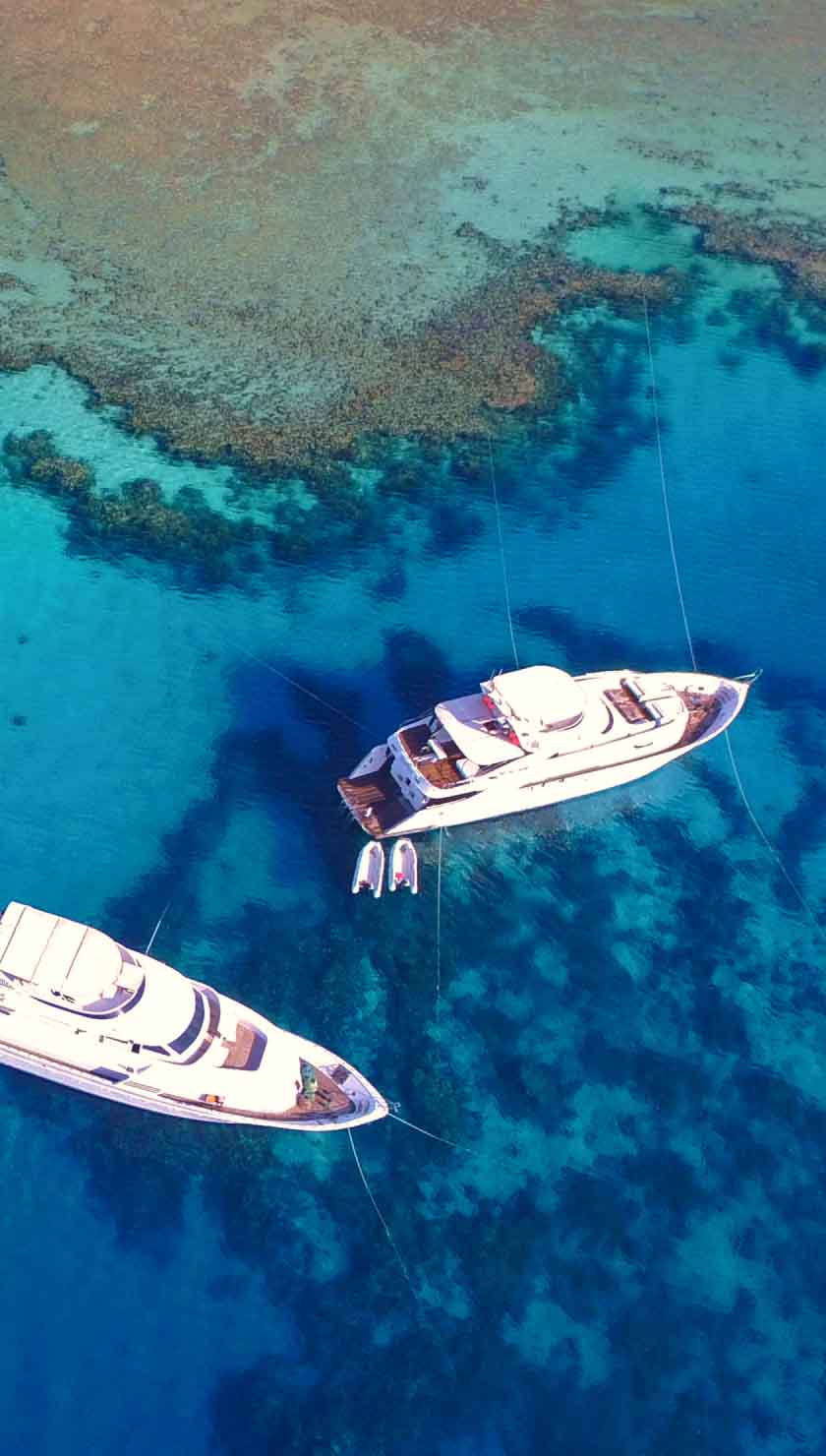What to Expect On A Canary Islands Liveaboard
Most liveaboards begin in Tenerife which has an extremely long and varied coastline with stretches of volcanic beaches and dramatic cliffs with equally impressive underwater walls. Tenerife diving liveaboards take guests to experience hidden gems that can only be accessed by boat. Sailing past ‘Los Gigantes’, the famous rock formations on the west of the island is a real highlight.
Although the Canaries are a well-loved tourist destination, a diving liveaboard will take guests to not only the most famous dive spots but also the more remote island sites. There are a number of less populated parts of the Canary Islands. La Gomera Island is particularly famous for diving. Not only does it offer stunning marine life, but also a unique culture and lush natural beauty on the island itself. Diving liveaboards to the Canaries will also give guests the chance to explore the misty forests and dramatic landscapes of the natural park at Garajonay.
Canary Islands Underwater
The waters around the islands of Tenerife and La Gomera are home to a beautiful blend of impressive volcanic topography and an abundance of marine creatures. The topography ranges from dramatic cave complexes to the Canary Islands' own underwater ‘Giant’s Causeway’. The numerous wrecks around the coastline are well-preserved thanks to the oceanic water conditions. There are also a number of sunken artificial reefs around the Canary Islands, thanks to local universities studying the ecological benefits of submerging everything. You can take your pick from disused ships to unusual concrete shapes and more. The Canary Islands enjoy a Mediterranean climate for most of the year and water visibility of up to 30 meters, although the temperature of the water can drop below 20 degrees in the winter.
Underwater water currents, although stronger in the summer months, are easily manageable and a diving liveaboard can provide pleasant drift dives when the water is moving faster. The currents also favour marine life sightings. Pelagic fish shoals, colossal stingrays, angel sharks and the resident green turtles come out in number to make the most of these nutrient-rich currents.
Dive Sites of the Canary Islands
Divers looking to explore dramatic underwater topography will be spoiled for choice on a Canary Islands liveaboard. Tenerife is home to La Catedral de Tenerife. This colossal volcanic formation is made up of a complex of caves and archways filled with shoals of fish, rock lobsters and moray eels. Also home to a fascinating volcanic landscape, La Montana Amarilla is a popular stop-off on diving liveaboards in Tenerife. The waves and yellow volcanic ash have created a unique lunar-type surface under the water with plateaus, spires and caves for swim-throughs.
For wreck lovers, Tenerife is also home to the Tabaiba, which was sunk as an artificial reef, and the Condesito which sank - far less deliberately - in an underwater canyon in the 1970s. Both wrecks are substantial in size and home to shoals of roncadors, plus octopi and the curious-looking trumpet fish.
Diving liveaboards to Gomera are focussed on the wealth of marine life that this tiny island has to offer. More remote than other parts of the archipelago, Gomera’s dive sites offer a wide array of marine life and, in particular, one of the Canary Islands most varied selection of rays. Punta Espino along from the port of Playa Santiago is an excellent spot for rays. Bull rays, stingrays, eagle rays and angel sharks can all be found there, taking advantage of the scraps thrown overboard by local fishermen. For pelagic shoals and excellent macro life, Roque del Herrero is the place to meet barracuda, octopi and rock lobster all in one spot.
All along the coast of Gomera and around Tenerife, a Canary Islands liveaboard also gives divers the chance to encounter one of the islands most beloved creatures: the turtle. Turtles are a common sight on many of the dive sites and many are very friendly, being well-accustomed to divers.
Top Tips for Divers
Despite the consistently sunny weather, the waters around Tenerife and Gomera can vary in temperature between the seasons.
The summer months can by upwards of 25 degrees but the winter can drop to around 17 degrees. Be sure to check before packing your suit.
Although the currents are far from dramatic by many divers’ standards, it is worth remembering that the Canaries are oceanic and therefore have some proper drift dives on offer.
Getting To the Canary Islands
The popularity of the Canary Islands as a tourist resort makes reaching the main islands such as Tenerife easy and affordable. Flights to Tenerife’s main airport, Tenerife South, are available from most large European airports.
Connecting flights from further afield usually involve a stop off in Madrid or London. There is also the option of travelling to Tenerife from one of the other islands. Gran Canaria, Lanzarote and Fuerteventura all have regular inter-island ferries and flights. La Gomera can be reached through Tenerife’s North airport, which offers small inter-island flights, or the ferry which departs from Santa Cruz. Gomera’s airport is quite small which means that it can only be accessed from Tenerife and does not offer any direct international flights.
The majority of diving liveaboards in the Canary Islands depart from and return to Tenerife.
Nicknamed the land of eternal spring, a Canary Islands liveaboard takes divers into clear blue Atlantic waters, rich in marine life. Most of the liveaboards in the Canary Islands are sailing ships which offer a unique experience and small groups.











